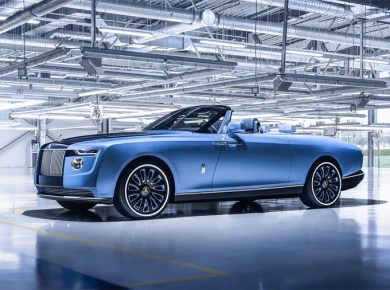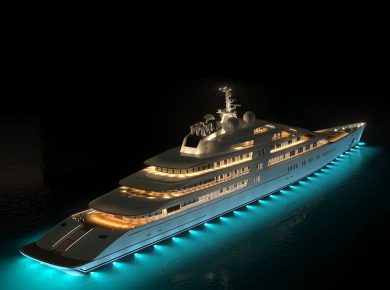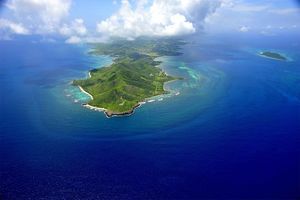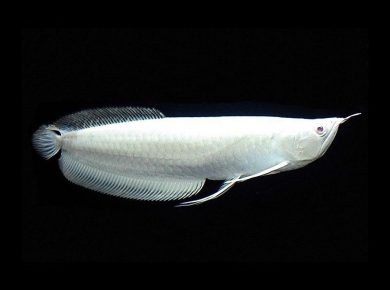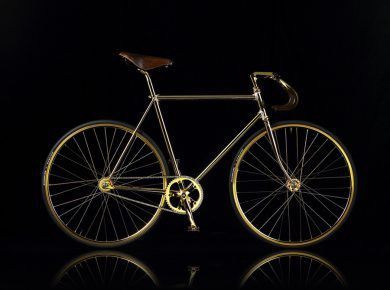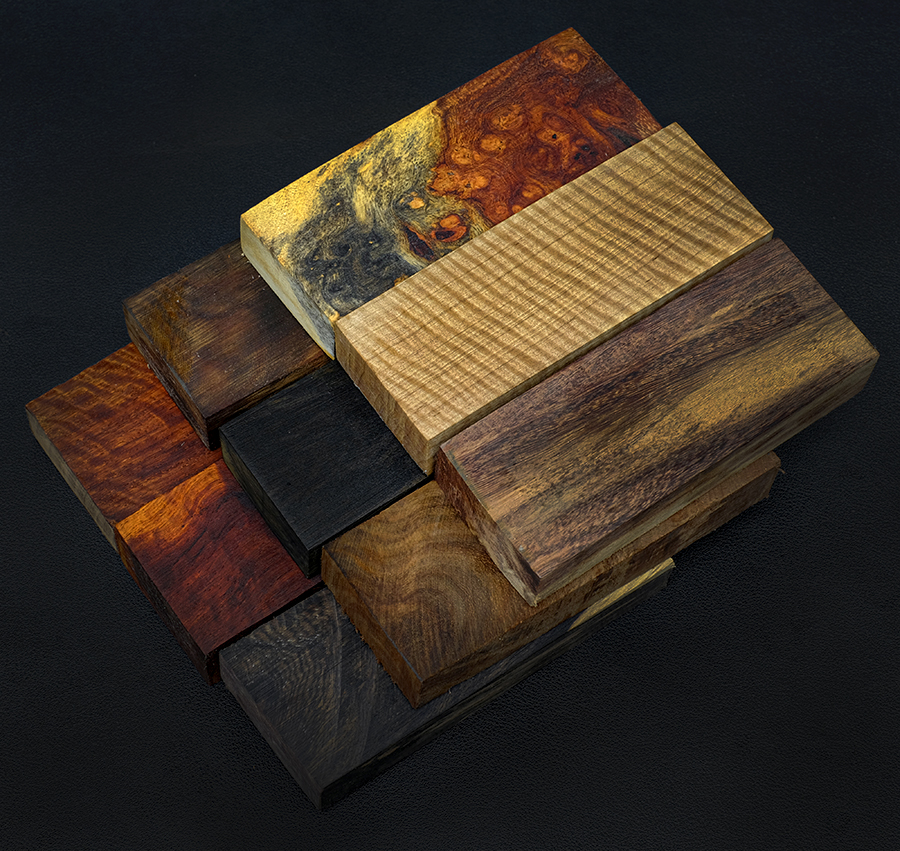
Few people realize that wood can rival precious metals in price. Of course, not every type of wood – only the rarest and most valuable ones. Certain elite species with extraordinary characteristics can sell for prices comparable to gold or platinum. This status is the result of a combination of exceptional natural traits, aesthetic beauty, high demand, and above all – extreme rarity.
Some woods reach prices that defy imagination. Agarwood, for instance, can fetch up to $25,000 per kilogram in chip form. The finest-grade pure agarwood oil can exceed $80,000 per liter, and top-quality agarwood specimens are sometimes valued at over $100,000 per kilogram.
Such prices are driven by a unique set of qualities. First, certain woods develop aromatic resins as a response to fungal or bacterial infections, transforming into dense, resinous structures rich in essential oils – as in Agarwood. Second, texture, density, grain, and color contribute to their distinctive appeal, much like Snakewood, whose pattern resembles the scales of a serpent. Third, harvesting and processing these species require great effort and control – as with African Blackwood, which grows only in specific regions of the African savanna and is protected by international conservation laws. All of this grants these woods their special status and exceptional value on luxury markets.
Where the World’s Most Expensive Trees Grow
Most rare and valuable wood species come from tropical or subtropical regions – humid jungles and rainforests across Asia, Africa, and Oceania. Agarwood (genus Aquilaria, Gyrinops) thrives in Southeast Asia – Indonesia, Malaysia, Vietnam, and Cambodia. Sandalwood (Santalum) flourishes in India, Malaysia, Australia, and the Pacific islands. Amboyna Burl (from Pterocarpus species) also comes from Southeast Asia. Gabon Ebony (Diospyros crassiflora) grows in Central and West Africa, while African Blackwood (Dalbergia melanoxylon) is native to the dry savannas south of the Sahara.
Many of these forests are remote and tightly protected. Some plantations are guarded with extreme security measures – in certain regions, forest roads are even mined to prevent illegal logging. These precautions apply particularly to agarwood groves and rare burl-bearing trees.
Their environment – high humidity, steady rainfall, warm temperatures, and natural resistance to pests – is essential for their growth and unique characteristics.
Who Buys the World’s Most Expensive Wood and How It’s Used
Buyers of elite wood include premium brands, luxury artisans, perfumery houses, and makers of exclusive musical instruments. For them, such rare wood is a way to emphasize refined taste and individuality, to tell a story through texture and scent.
Here are the main areas where the world’s most expensive and prestigious woods are used:
Automotive luxury
Rolls-Royce is known for turning rare wood into works of art within its cabins. The Rolls-Royce Phantom Koa features veneers made from Hawaiian koa wood — a search that took years to find the right tone and figure. In earlier decades, Rolls-Royce also used Amboyna Burl in its instrument panels.
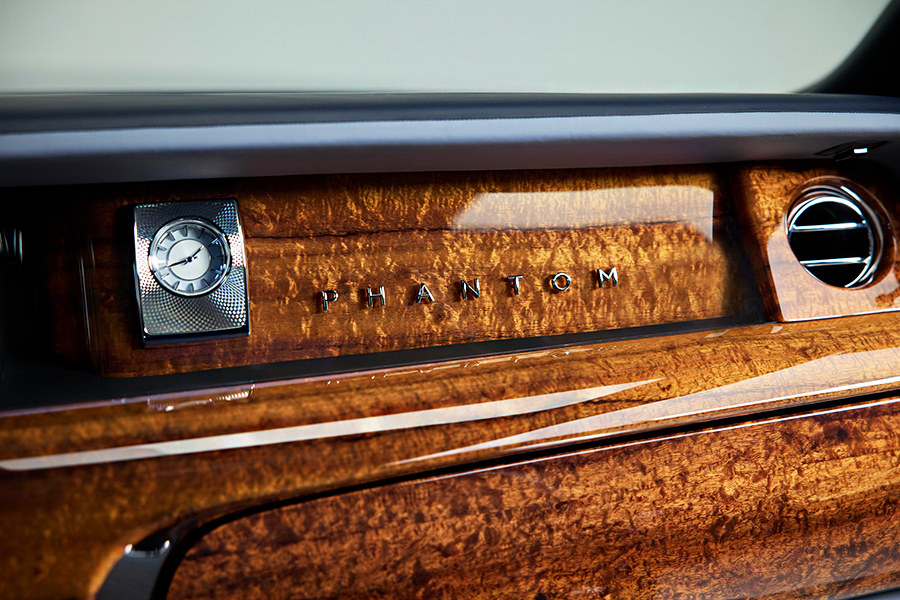
Image source: Carscoops.com
But Rolls-Royce isn’t the only brand that favors elite wood in its car interiors — Bentley uses ebony and walnut burl, while Aston Martin applies zebrano and rosewood for its central console finishes.
High-end musical instruments
Brands such as Martin, Taylor, and Gibson Custom Shop craft their guitars from African Blackwood, Cocobolo, Amboyna, and rosewood, prized for their tonal depth and aesthetic warmth. Bass makers like Fodera and Alembic also rely on these woods. Fine violins and cellos often feature fingerboards made of Gabon Ebony.
Luxury writing instruments
Montblanc, Graf von Faber-Castell, Caran d’Ache, and Montegrappa incorporate Amboyna, Cocobolo, and African Blackwood into limited-edition pens, valued for their warmth, weight, and craftsmanship.
Jewelry boxes, tableware, and decorative art
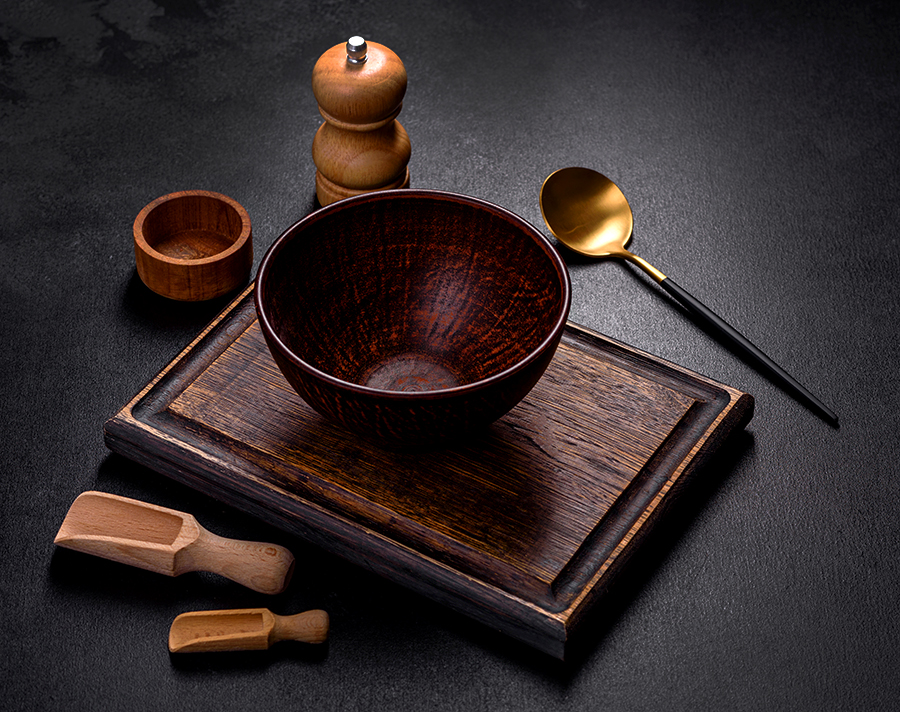
Manufacturers like Buben & Zörweg and Erwin Sattler create collectible clocks and presentation cases finished with Amboyna Burl and rosewood, giving interiors a noble glow and refined presence.
Fine furniture and interior panels
Design houses such as Roche Bobois, Minotti, and Fendi Casa use burl veneers, rosewood, and koa in their limited furniture lines. The dramatic grain of these woods becomes the centerpiece of the piece.
Perfumery and aromatherapy
Houses like Amouage, Initio, Creed, and Maison Francis Kurkdjian rely on Agarwood and Sandalwood for their most exclusive oud-based compositions. These oils, among the world’s costliest, embody sophistication and timeless elegance.
Superyacht interiors
And of course, the world’s finest and most expensive yachts are finished with rare and costly woods. In the cabins of superyachts built by Feadship, Lürssen, and Benetti, one can often find inlays of Amboyna veneer, Ebony, and Sandalwood — woods admired for their strength and resistance to humidity. These species are valued for their stability in a marine climate and their natural, noble luster.
The Top 10 Most Expensive Woods in the World
Rare and noble types of wood have been regarded for centuries as a symbol of luxury. They differ in color, texture, weight, fragrance, and even in their origin story. Here is a selection of the ten most expensive kinds of wood in the world — each with its own character and unmistakable aura.
10. Lignum Vitae – $80–120 per board foot
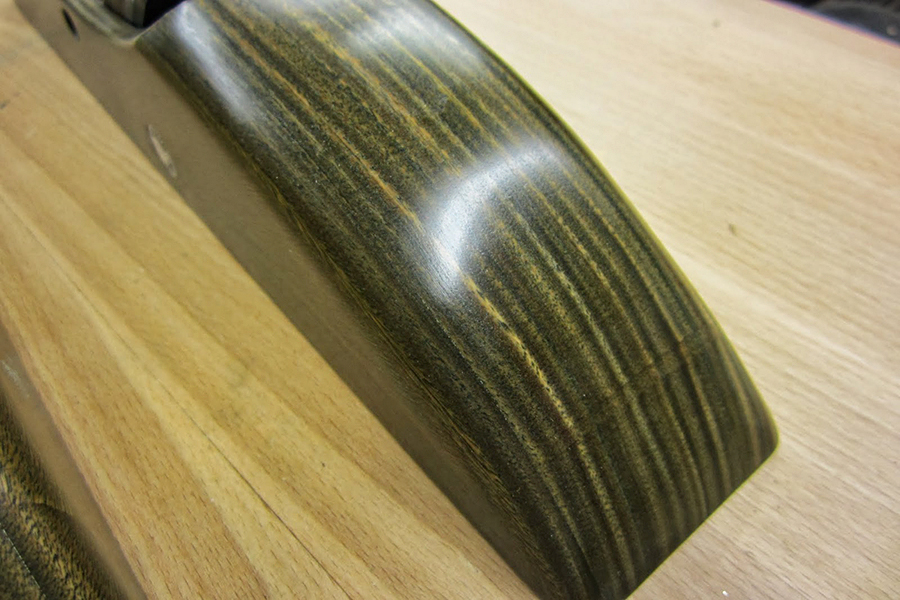
Image source: Davidbarronfurniture.blogspot.com
One of the densest woods on Earth, so heavy it sinks in water. Naturally oily to the touch, with hues ranging from olive-green to dark brown and a deep inner glow. The resin saturating its grain makes it nearly impervious to rot — historically used for ship bearings and clock mechanisms since the 18th century. Its scent is warm, resinous, and reminiscent of aged oil and spice.
9. Cocobolo – $80–150 per board foot
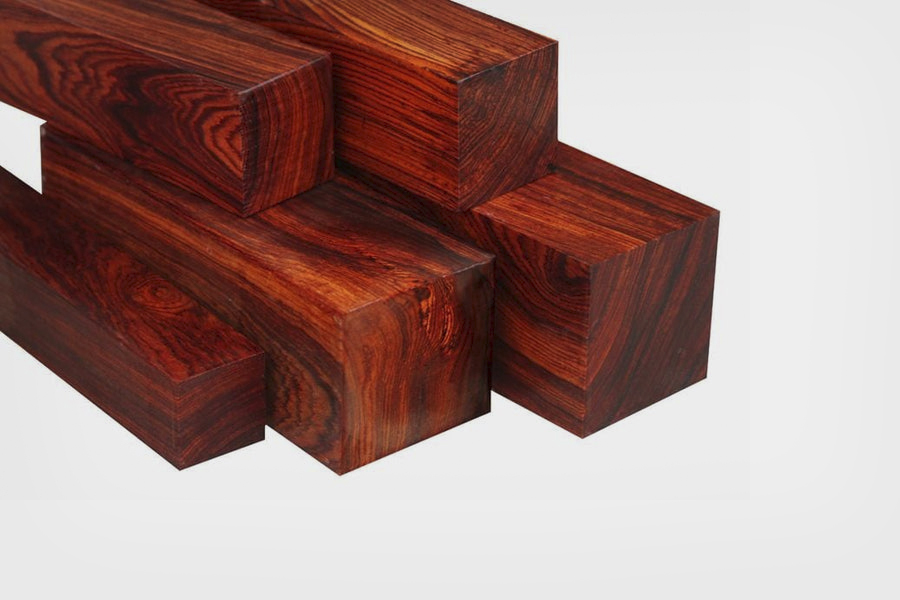
Image source: Cookwoods.com
Native to Central America, Cocobolo dazzles with fiery red, orange, black, and purple streaks that appear to flicker under polish. Dense, heavy, and water-resistant, it exudes a subtle rosewood-citrus fragrance. Used in Taylor and Martin guitars, luxury knife handles, and fine jewelry.
8. Koa – $150–200 per board foot
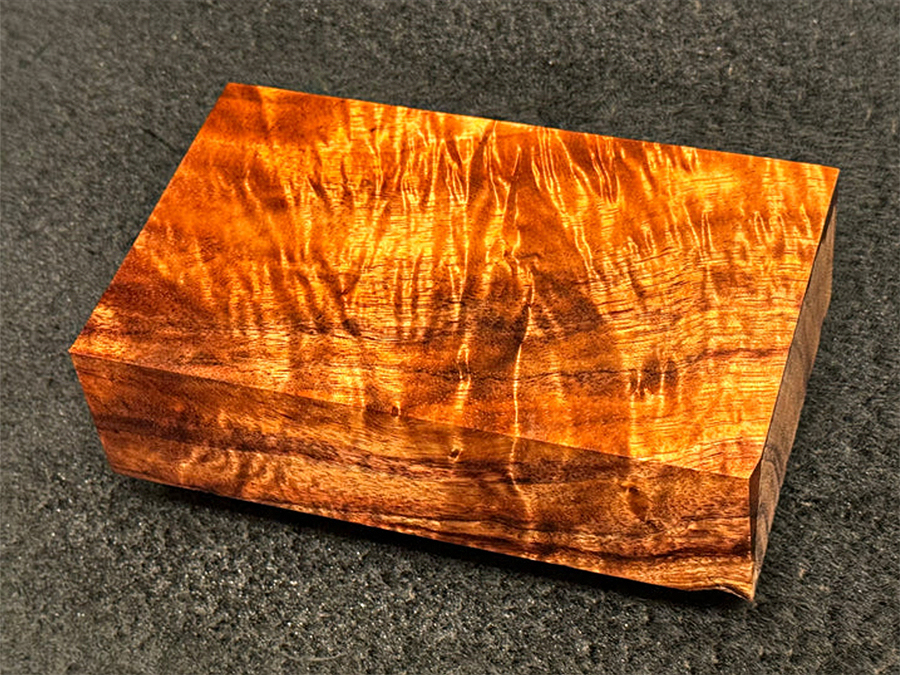
Image source: Koawoodworks.com
The pride of Hawaii. Its shimmering fibers reflect light like waves, with a velvety surface and hues from honey-gold to reddish amber. Medium-weight, pleasantly fragrant, and easily polished, koa was once used to carve royal canoes and ornaments. It was koa wood that defined the unique interior of the Rolls-Royce Phantom Koa Edition, underscoring the status of this species as a true symbol of exotic luxury.
7. Snakewood – $250–300 per board foot
True to its name, its grain mimics the scales of a python. The reddish-brown wood is interlaced with dark mottling that shimmers when polished. Extremely dense and heavy, it produces a crisp ringing tone when struck — ideal for bows, mouthpieces, and ornamental work. Smooth and cool to the touch, almost stone-like.
6. Amboyna Burl – $200–300 per board foot
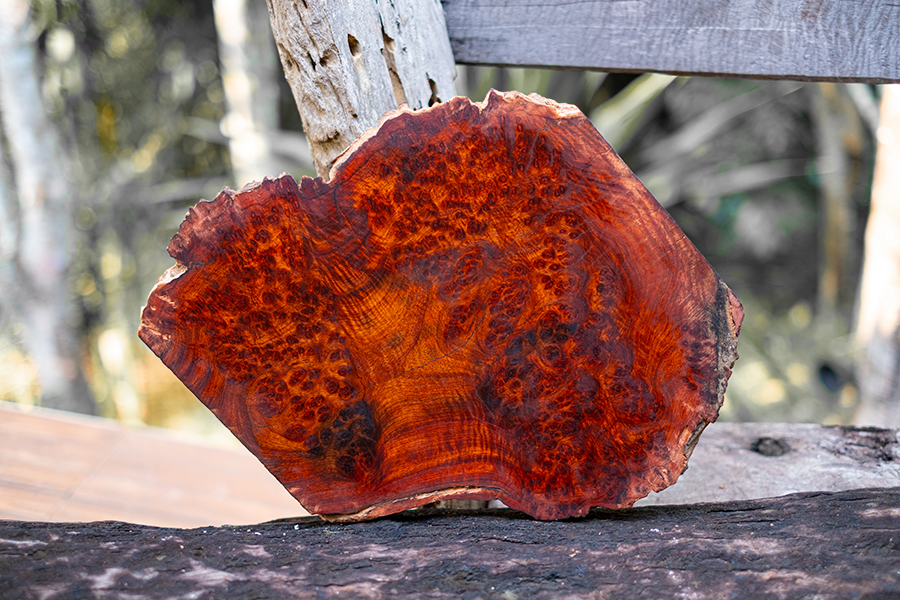
A visual explosion of swirling grain and fiery hues from golden amber to deep red. Each burl slab is unique, resembling a miniature galaxy.
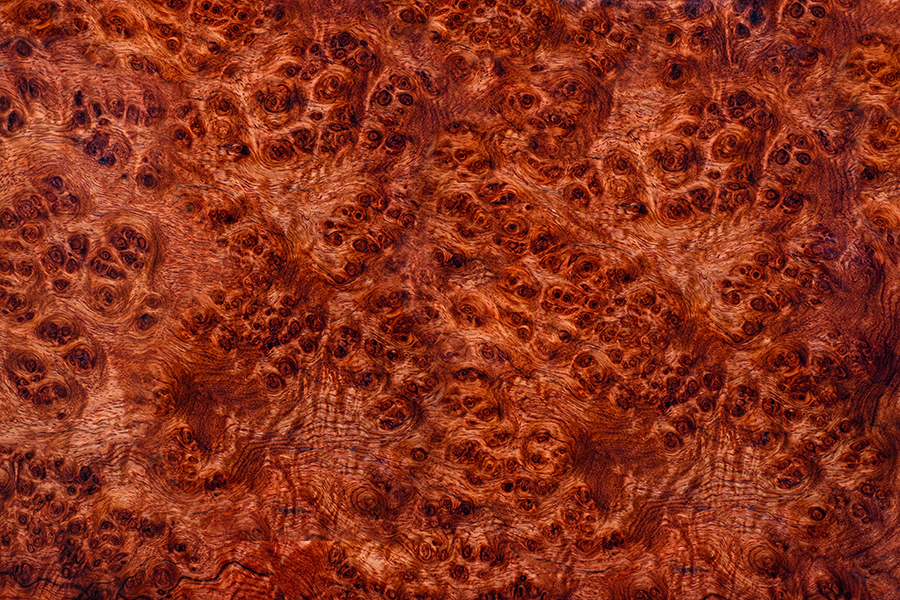
Smooth, dense, and slightly warm, it has long been favored by artisans at Rolls-Royce, Montblanc, and luxury yacht designers for its noble complexity.
5. Gabon Ebony – $120–150 per board foot
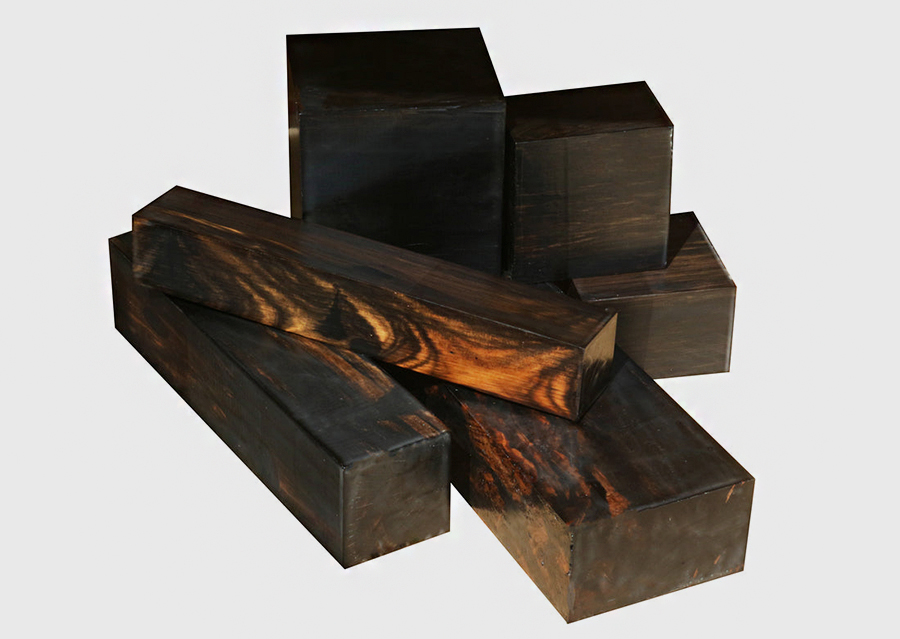
Image source: Cookwoods.com
The legendary black wood of Central Africa — so dense it rings like metal. Deep, jet-black, mirror-polished, and cold to the touch. It carries a faint earthy aroma. Used for Steinway & Sons piano keys, Gibson Custom guitar necks, and luxury inlays.
4. African Blackwood – $100–180 per board foot
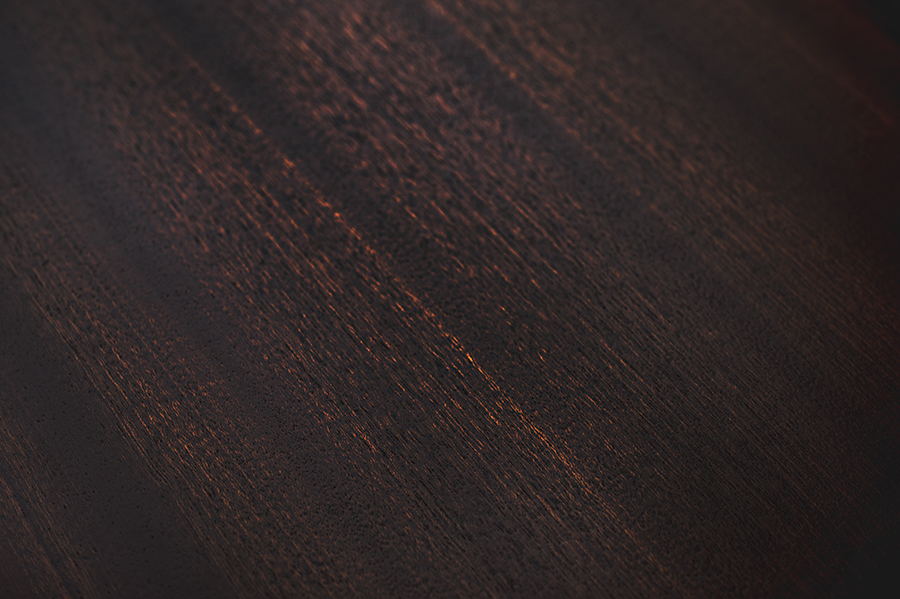
A dark, purplish wood of near-metal density. It resonates with clarity, which makes it the standard for handcrafted clarinets, oboes, and flutes by Buffet Crampon and Yamaha.
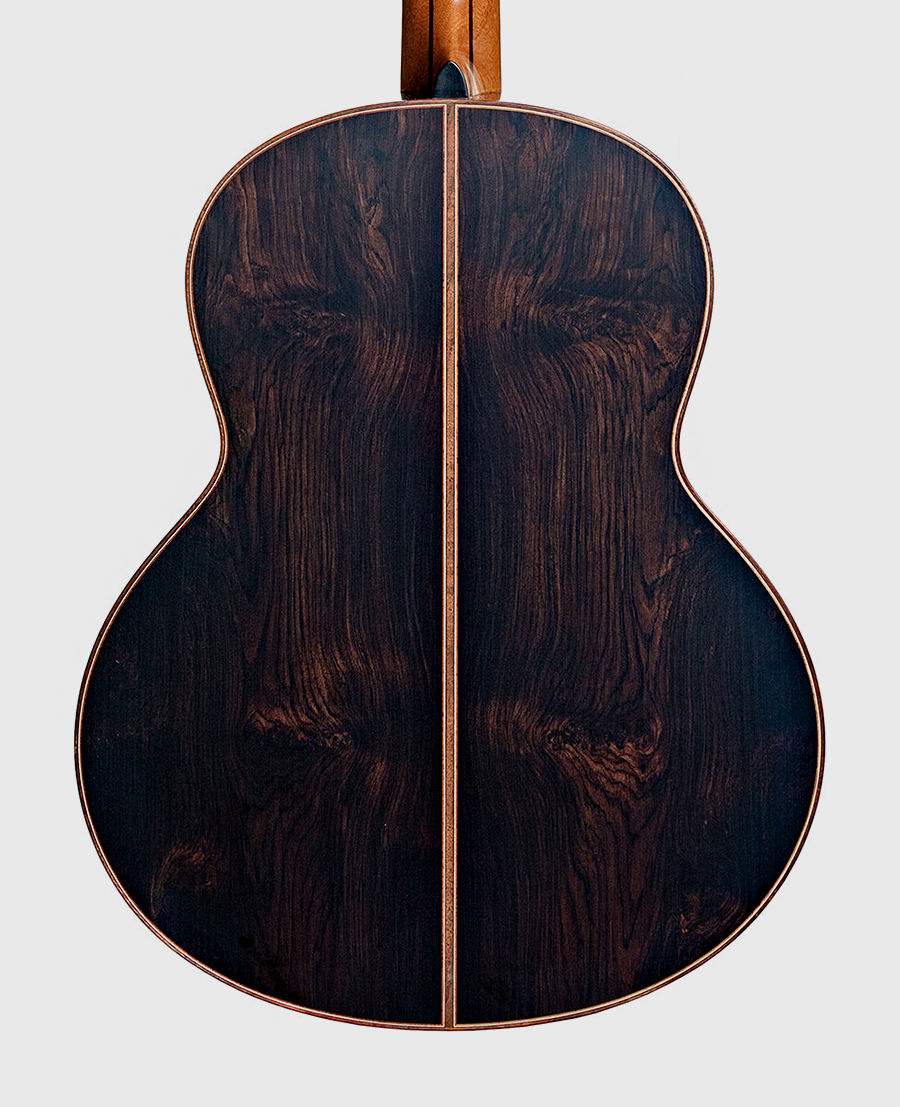
Image source: Guitargallery.co.za
Heavy, slightly oily, and rich in tone – a material revered by musicians worldwide.
3. Pink Ivory – $150–200 per board foot
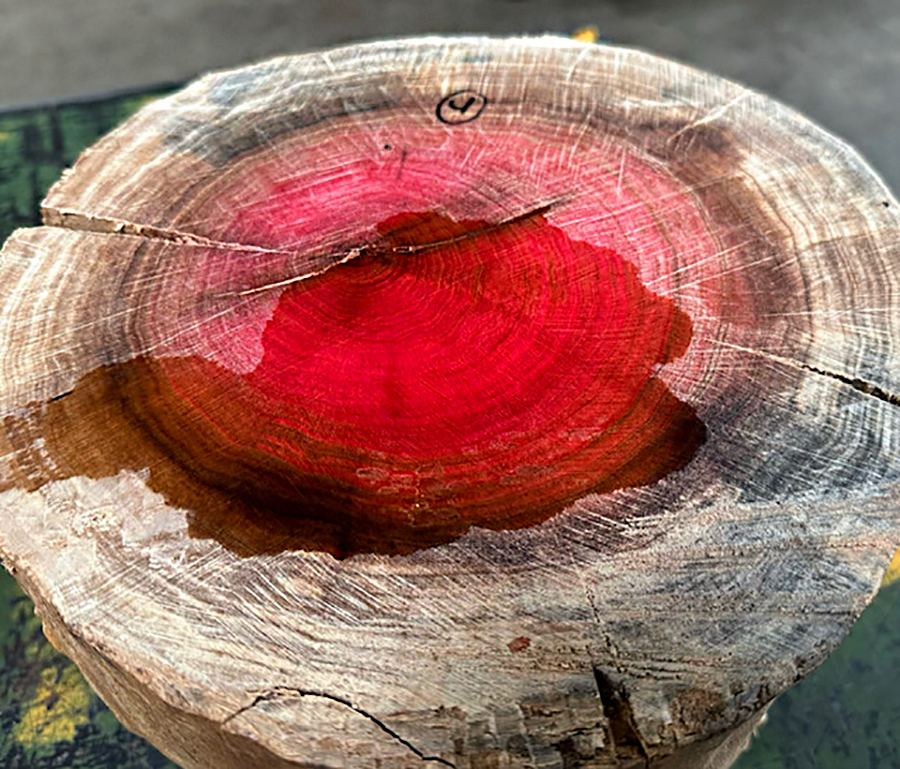
One of the rarest woods in South Africa, once considered sacred and reserved only for Zulu chiefs. Its color ranges from gentle rose to vibrant purple, and its grain is fine and silky.
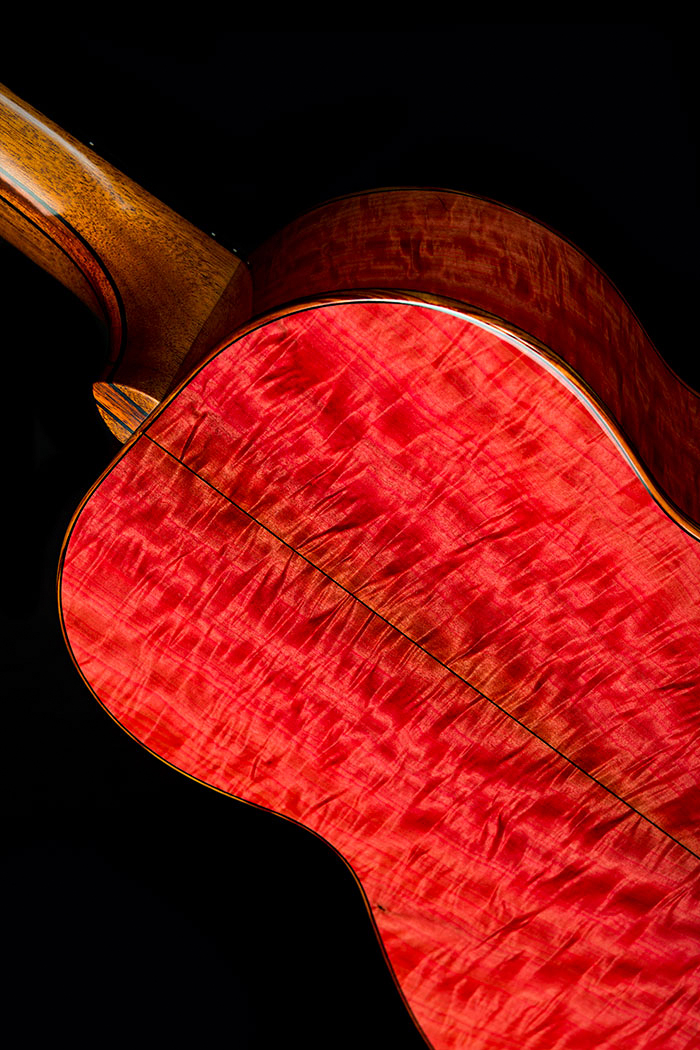
Image source: Fyldeguitars.com
To the touch, the wood feels warm, dense, and faintly aromatic. It is used for decorative boxes, knife handles, and exclusive chess sets. When perfectly polished, Pink Ivory seems to radiate a soft inner light.
2. Sandalwood – up to $5,000 per kg (essential oil)
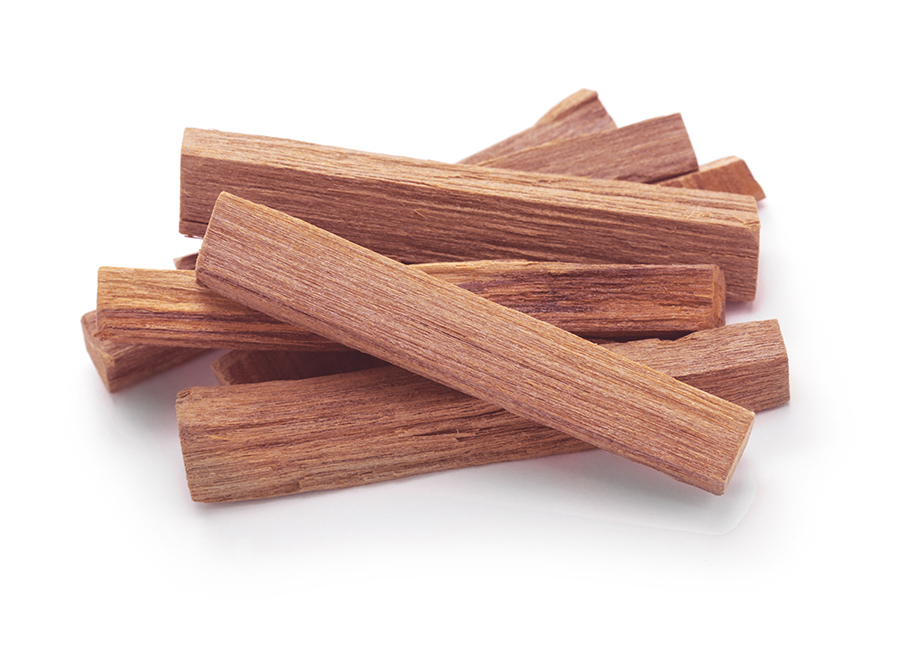
Sandalwood is prized not only for its hardness and fine texture but also for its fragrance — rich, warm, enveloping, and instantly recognizable around the world. Its wood is pale yellow, with an oily sheen and remarkable smoothness. It dries slowly, rarely cracks, and continues to release its scent for decades. Artisans carve it into intricate panels, figurines, and incense holders.
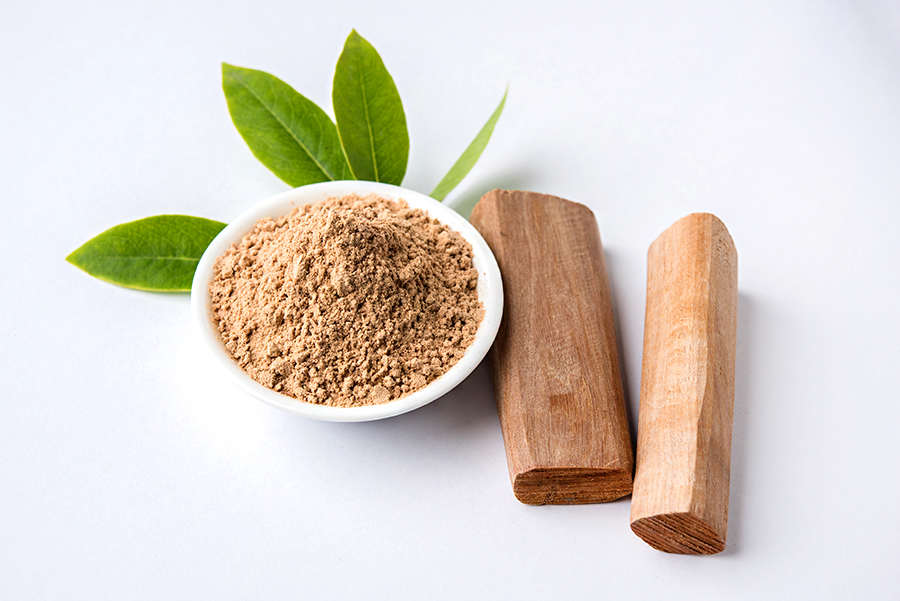
Sandalwood oil remains one of perfumery’s most expensive essences, found in the compositions of Chanel, Dior, Amouage, and Tom Ford.
1. Agarwood – up to $25,000 per kg, sometimes more
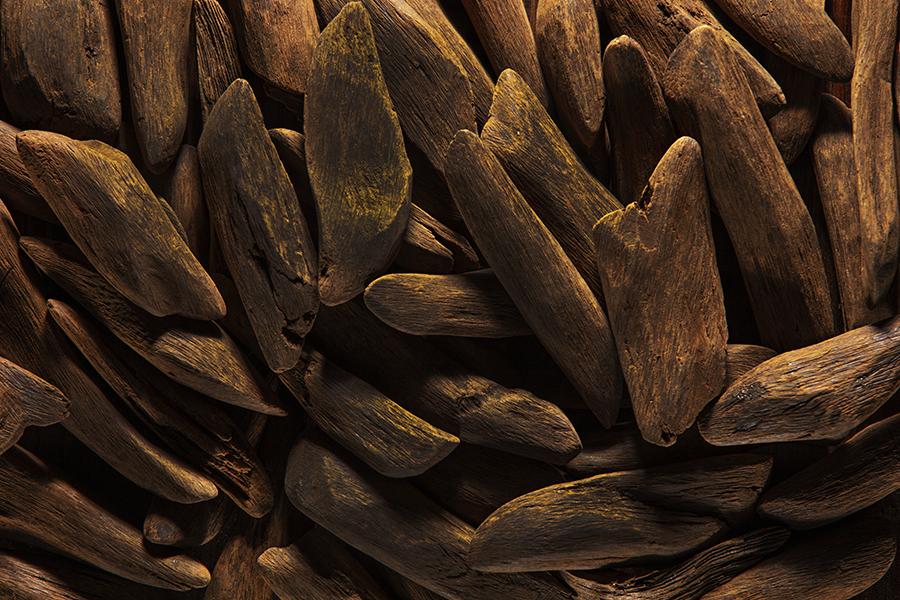
The most expensive wood in the world — and a true legend of Eastern culture. Agarwood is a cultural symbol of wealth, prayer, and contemplation. Its scent has accompanied kings, philosophers, and perfumers for centuries, becoming the very essence of both earthly and spiritual richness. Where does this aroma, so highly prized around the world, come from?
When the heartwood of the Aquilaria tree becomes infected by a specific fungus, it begins to produce a rare aromatic resin known as oud.
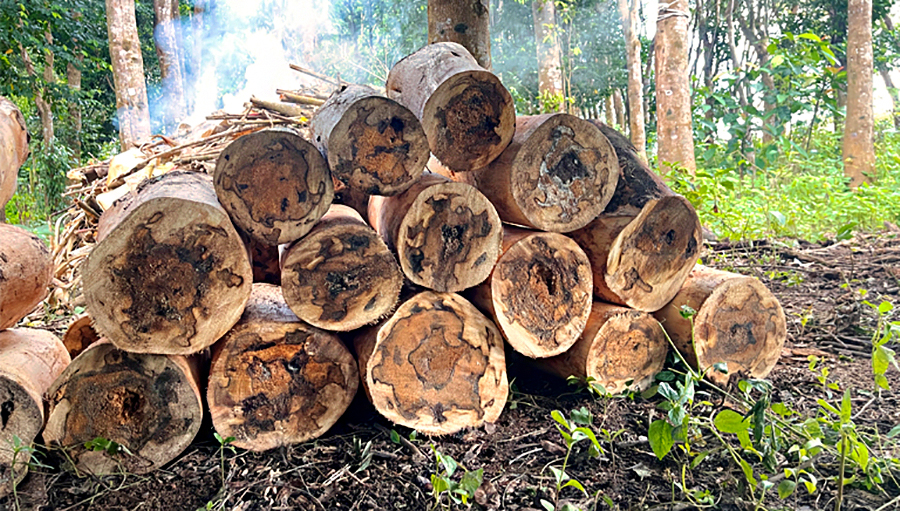
Image source: Dadvanceagarwoodsolutions.com
Outwardly, agarwood looks modest — dark brown, porous, sometimes streaked with black veins. Yet its fragrance is mystical, deep, and multi-layered: a fusion of smoke, incense, honey, amber, and leather. Each piece is unique, and the concentration of resin determines its value, reaching up to $100,000 per kilogram.
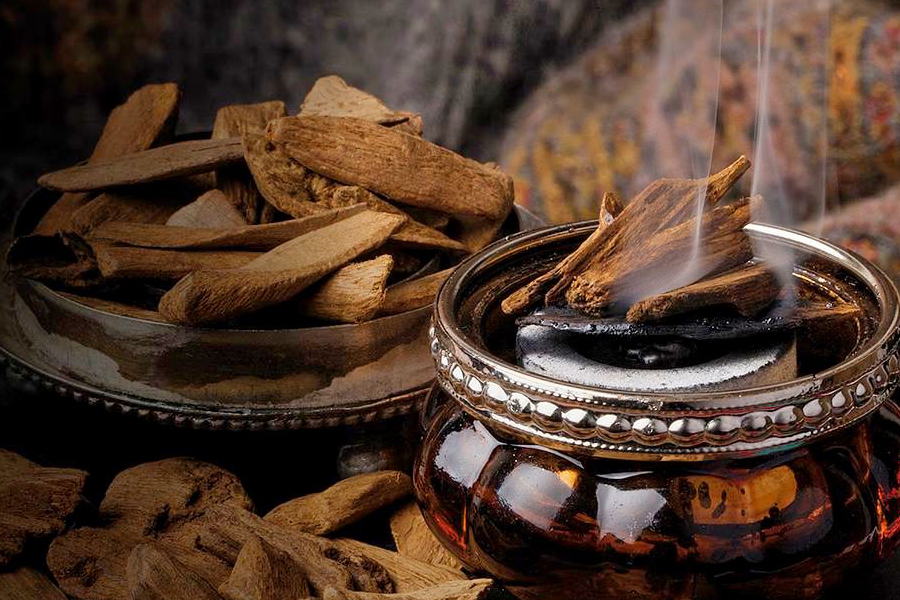
Image source: Naturalnicheperfume.com
From it come incense, jewelry inlays, and iconic perfumes such as Maison Francis Kurkdjian Oud Satin Mood, Amouage Interlude Man, and Initio Oud for Greatness.
The Most Expensive Wood Used for Parquet and Decking
For parquet and decking, oak, ash, larch or thermally modified pine are most commonly used. These species are durable, practical, aesthetically pleasing and relatively affordable. However, there is a segment of projects where wood is chosen differently. This refers to high-end private residences, villas with large open terraces, homes with panoramic living areas, as well as yachts and piers, where the flooring becomes part of the overall atmosphere and status.
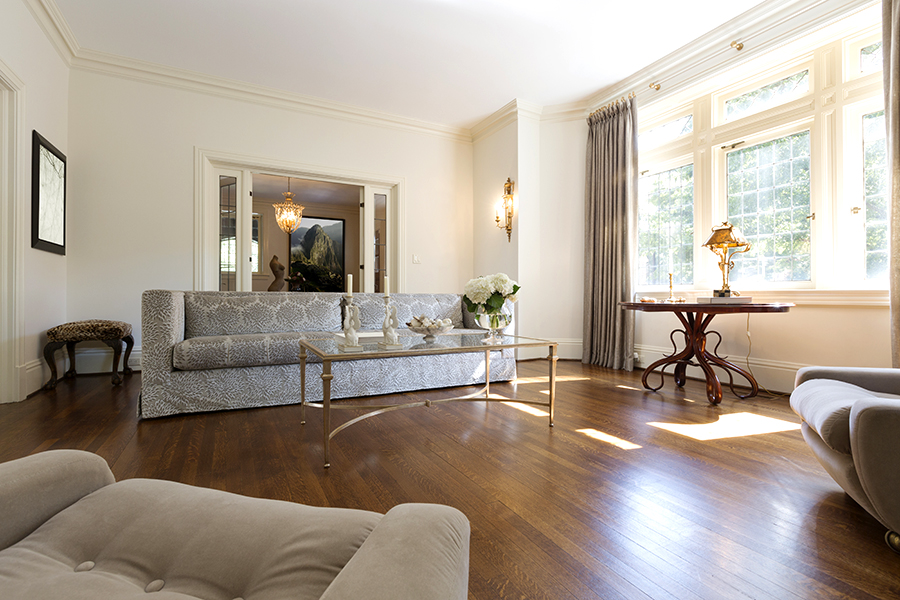
In such cases, rare and more expensive wood species are selected. They appear on the market in limited quantities and have a strong, recognizable character. These include Macassar ebony, Wenge, Zebrawood, Burmese Teak, Ipe, Cumaru and Santos Mahogany. Each of them differs not only in color and grain pattern. Density, moisture resistance, lifespan and the ability to retain appearance for decades with proper finishing and installation are equally important.
Below, these species are presented from the most expensive to the less expensive, with examples of use and approximate price levels.
Macassar ebony
The most expensive and visually striking wood for flooring. Dark and honey-brown stripes create a strong graphic pattern that remains expressive even in soft lighting. It is used as an artistic parquet in studies, reception areas and formal rooms where status is emphasized. It comes from the species Diospyros celebica, listed as vulnerable by IUCN, which increases requirements for verified legal sourcing and affects market price. In the US, 4/4 lumber is sold at around $70–$100 per board foot in small quantities, and individual boards can cost several hundred dollars per piece. For premium solid flooring, prices may reach up to $150 per square foot, although in many projects an engineered board with a Macassar veneer over a stable core is used to preserve the visual effect while keeping cost under control.
Wenge
A deep dark-chocolate color without a loud or busy grain makes wenge popular in restrained, calm interiors. This parquet is installed in private homes and upscale apartments where a sense of weight and quiet presence is needed. The wood is dense and not easy to work with, but it has a long service life. In Europe, engineered wenge parquet appears in price lists starting at around £199 per square meter, while exclusive large-format boards may reach up to £800 per square meter. In artistic parquet compositions, wenge is often used as a dark contrast to light oak or maple.
Zebrawood
The striped pattern immediately makes the floor a focal point. On large surfaces it is used less frequently; instead, it highlights fireplace areas, entrance halls, borders and medallion inlays. In US retail, engineered zebrawood flooring is offered around $6 per square foot due to a thinner wear layer and more accessible core, while solid boards and thick veneer options are significantly more expensive and are usually purchased to order. In lumber price lists, 4/4 zebrawood is consistently positioned in the higher range among exotic hardwoods.
Burmese teak
Teak is associated with prestigious terraces and yacht decks. The effect is defined not only by prestige but by the wood’s properties. Natural oils and stability in contact with moisture allow teak to remain reliable in conditions of sun and salt spray, which is why it is used for poolside decking, private piers and also for interior floors in coastal homes. In Europe, a fully installed yacht deck with materials and vacuum bonding generally ranges from about €1150 to €1500 per square meter, and some shipyards and contractors start quotes at €1500 per square meter. It is important to note the sanctions framework regarding Myanmar and the state enterprise MTE, which has placed Burmese teak under strict international control since 2021. Many projects now use certified teak from alternative regions or reclaimed teak.
Ipe
Chosen for public terraces and high-load private decking where long service life is essential. New York public projects are often referenced as proof of durability. Ipe boards served for decades on the historic Coney Island boardwalk, and after removal some of the material was reused in furniture and architectural installations. The High Line park also used tropical hardwoods and reclaimed wood in outdoor seating and walkway elements, with teak appearing in later phases of the project. In the UK, decking boards are commonly offered from about £60 to £110 per square meter excluding VAT, and selected FSC-certified boards from some suppliers start around £110 per square meter.
Cumaru
Outdoor decking with durability comparable to ipe, but with a warmer color tone. In private terrace projects, cumaru is chosen when a balanced ratio of cost and lifespan is required. In supplier price lists, the material is often marketed as “Brazilian Teak,” emphasizing its suitability for exterior use. In terrace budgets, cumaru typically sits below ipe and Burmese teak, which allows for larger deck areas without compromising service life expectations.
Santos mahogany
A warm, saturated tone and high density make this wood one of the favored “red” species for residential flooring. It is selected for large interior spaces where an exotic character should look refined rather than dramatic. In US retail, solid ¾-inch planks are commonly priced around $7–$8 per square foot, with engineered boards falling into a similar range depending on the thickness of the wear layer. Such flooring is used in living rooms and dining rooms where a durable and decorative surface is needed without additional inlay or contrast accents.
